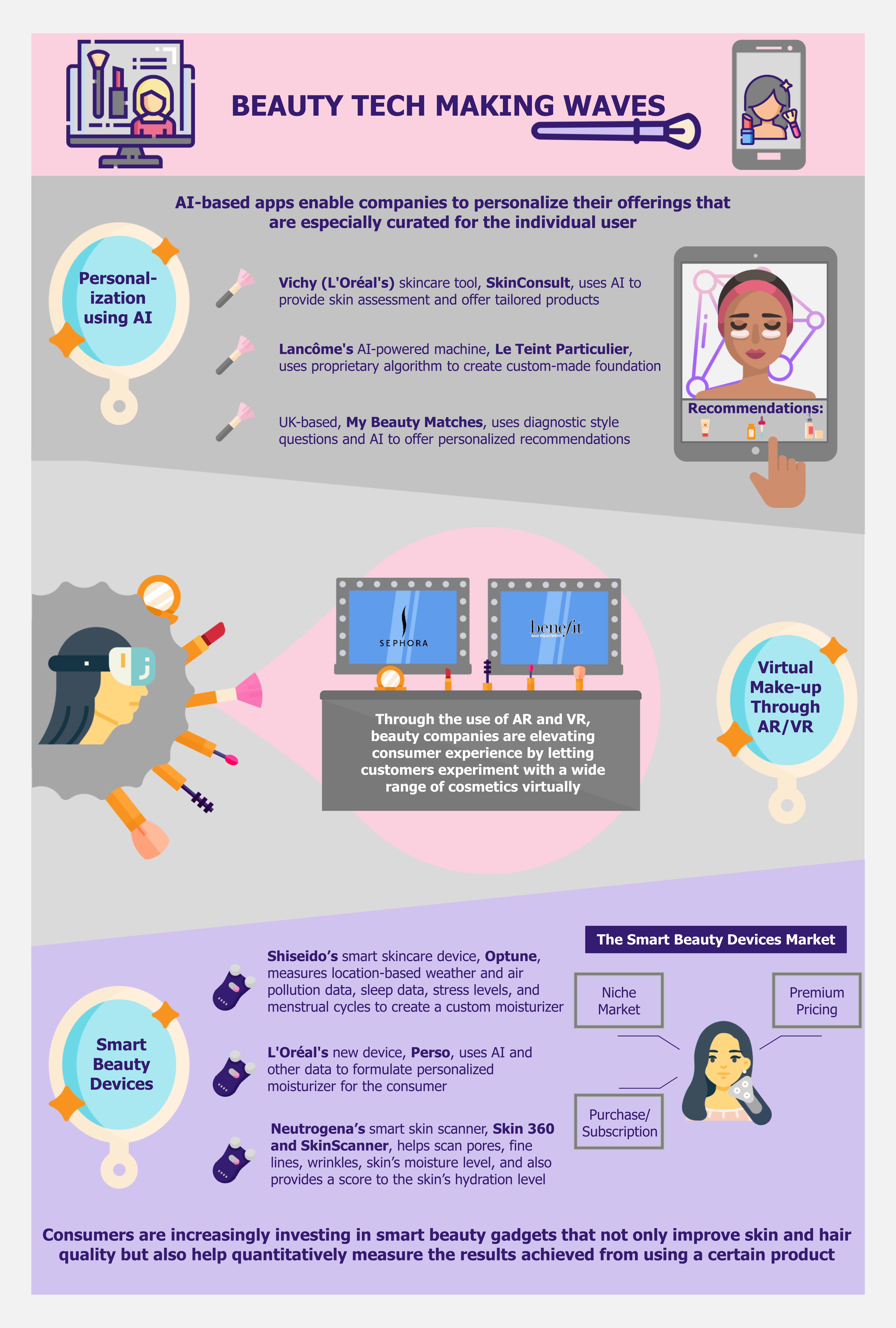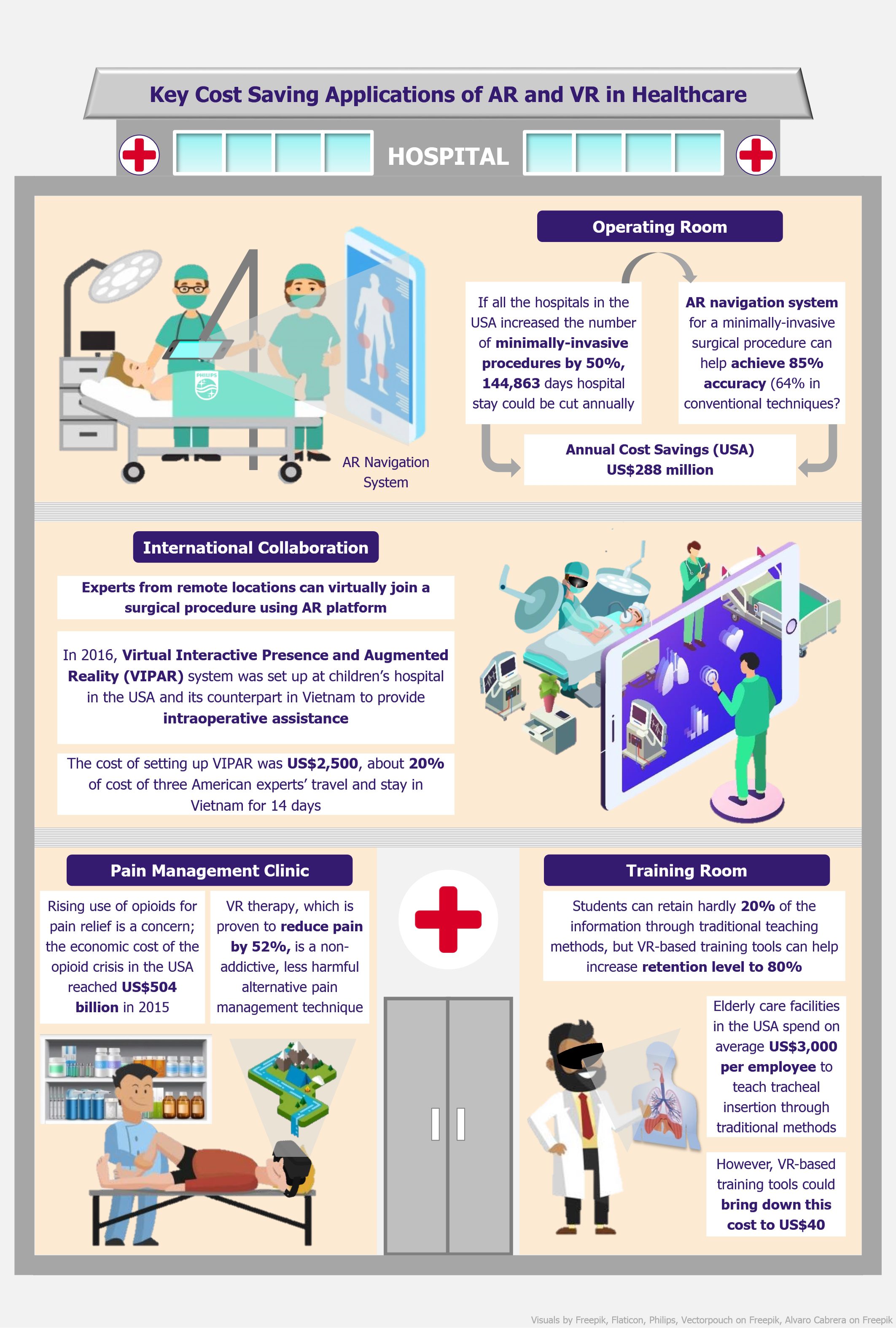In recent years, artificial intelligence and virtual reality have been adding an additional dimension to the beauty industry, quite literally. With consumers increasingly embracing and demanding personalized offerings and precise results, leading brands, such as L’Oréal and Shiseido are investing heavily in the space. Just as in many other industries, AI is revolutionizing beauty products and how they are conceptualized, created, and sold. However, it is a long road from being perceived as gimmicky promotions to improving customer engagement to becoming commercial go-to solutions.
Artificial intelligence (AI) has been greatly integrated in our lives through different sectors and now the beauty industry is no exception. The use of AI, augmented reality (AR), virtual reality (VR) as well as complex beauty devices has revolutionized the way consumers perceive, apply, and select beauty products. Moreover, in the age of online retail, it enables companies to maintain a similar personalized level of service that would otherwise require a physical interaction with a beauty consultant. Technology is creating new experiences for the consumer, both in terms of beauty products’ features as well as purchasing process.
Beauty industry is also one of the most competitive sectors, with consumers always being on the lookout for new products and having low brand loyalty. Beauty tech seems to address this issue as well, as it elevates consumer engagement through enhanced personalized offerings, which in turn is a trend that has been driving the beauty industry for several years now.
The three main aspects of beauty tech encompass personalization through AI, virtual makeup using AR and VR, and smart skincare tools/beauty gadgets.
Personalization through AI
Across the retail sector, the key to consumer’s heart and pockets for a long time has been personalization of products and sales experience. Beauty industry is no exception. Consumers have been looking for the perfect skincare product that work best for them or the lipstick shade that goes perfectly with their skin tone. Moreover, consumers want this all from the comfort of their home. This is where AI comes in.
Through retail kiosks and mobile apps, AI enables companies to offer personalized shade offerings that are especially curated for the individual user. A number of companies is investing and capitalizing on this technology to differentiate themselves in the eyes of the consumer. One of the leading market players in the beauty industry, L’Oréal, has been one of the first companies to invest in AI- and VR-based beauty tech and acquired Toronto-based, ModiFace, in 2018. There are several different ways companies, such as L’Oréal, have incorporated AI into their product offerings.
Lancôme (a subsidiary of L’Oréal) has placed an AI-powered machine, called Le Teint Particulier, at Harrods and Selfridges in the UK, which creates custom-made foundation for the customer. The machine first identifies ones facial color using a handheld scanner, post which it uses a proprietary algorithm to select a foundation shade from 20,000 combinations. Following this, the machine creates the personalized shade for the user, which can then be bottled and purchased.
In addition to physical store solutions, AI-powered apps and websites also offer consumers personalized recommendations. In 2019, L’Oréal applied ModiFace’s AI technology to introduce a new digital skin diagnostic tool, called SkinConsult, for its brand, Vichy. The AI-powered tool uses more than 6,000 clinical images in order to deliver accurate skin assessment for all skin types. It analyzes selfies uploaded by users to identify fine lines, dark spots, wrinkles, and other issues, and then provides tailored product and routine recommendations to the user to address the skin concerns.
My Beauty Matches, a UK-based company, offers AI-based personalized and impartial beauty product recommendations and price comparisons. The website asks consumers diagnostic-style questions about their skin and hair type, concerns, and preferences, and uses AI to analyze the data and recommend products from 400,000 products (from about 3,500 brands) listed on its website. Alongside, the company runs Beauty Matches Engine (BME), which is a solution for beauty retailers using consumer data and AI algorithms to identify consumer purchasing and browsing patterns as well as their preferred products by age and skin or hair concerns. This helps retailers predict and stock, which product the consumer is likely to purchase, improving sales, increasing upsells, and providing a personalized solution to customers.
On similar lines, another app, Reflexion, uses AI to measure the shininess of skin through pictures and offers personalized product recommendations. The app claims to provide much deeper analysis than regular image analysis apps and provides additional features such as testing if products such as foundation are evenly applied. The app works by measuring a face surface’s Bidirectional Scatter Distribution Function (BSDF), which is a measure of light reflected on the user’s face.
Nudemeter is another such product, which uses AI to personalize makeup choices and foundation shades for a full spectrum of skin tones, including darker skins. The app uses color analysis and digital image processing along with its AI algorithms that ensure accurate color measurement irrespective of background lighting, pixels, etc. The app is currently being used by Spktrm Beauty, a US-based niche beauty company targeting shoppers with dark skin.
Virtual makeup through AR and VR
In today’s world where consumers prefer to shop from the comfort of their homes, AR and VR are enabling beauty companies to provide experience similar to that of physical retail to their consumers. AR and VR technologies-based apps let users experiment virtually with a range of cosmetics by allowing them to try several different shades, all within minutes and through their smartphone. This elevates the users shopping experience and improves sales conversion.
Sephora’s Virtual Makeup Artist enables customers to try on thousands of shades of lipsticks and eyeshadows through their smartphones or at kiosks at Sephora stores. While many such apps and filters have been in use for some time now, they are increasingly becoming more sophisticated, providing accurate color match to the skin and ensuring the virtual makeup does not move when the user shakes their face, changes to a side angle, etc. In addition, such apps also provide digital makeup tutorials to engage customers.
On similar lines, L’Oréal uses ModiFace’s AR and AI technology to provide virtual makeup try-on on Amazon and Facebook. The technology enables customers using these two platforms to try on different shades of lipsticks and other make-up products through a live video or a selfie from an array of L’Oréal brands such as Maybelline, L’Oréal Paris, NYX Professional Makeup, Lancôme, Giorgio Armani, Yves Saint Laurent, Urban Decay, and Shu Uemura.
Moreover, AR-based try-on apps helped brands connect with their customers during the previous year when most customers were stuck home and could not physically try on make-up. LVMH-owned Benefit Cosmetics has been investing in AR tech, and launched Benefit’s Brow Try-On Experience program (along with Taiwanese beauty-tech company, Perfect Corporation), which helps online shoppers identify the right eyebrow shape and style for them and then choose products accordingly. The company uses facial point detector technology for the program. The app witnessed a 43% surge in its daily users during April and May of 2020 (as compared with January and March 2020), when people were confined to their homes owing to the COVID outbreak. This helped connect with consumers in a fresh manner and increased brand loyalty. Moreover, Benefit claims that brows products have been their strongest category post-COVID outbreak.
One of China’s leading e-commerce players, Alibaba, also partnered with Perfect Corporation to integrate the latter’s ‘YouCam Makeup’ (an AR-based virtual makeup try-on technology) into Alibaba’s Taobao and Tmall online shopping experience.
Smart devices
In addition to AI and AR based apps and solutions, smart devices is another category in the beauty tech space that is gaining momentum. A certain section of premium consumers are increasingly open to invest heavily into smart beauty gadgets that not only improve skin and hair quality but also help them quantitatively measure the results from using a certain product. While these products are currently expensive and for a niche audience, they have been gaining popularity, especially across the USA and China.
One such smart skincare device is L’Oréal’s Perso, which is based on ModiFace’s AI-powered skin diagnostics and analysis technology. Perso uses AI, location data, and consumer preferences to formulate personalized moisturizer for the consumer. The product is further expected to extend into foundations and lip shades. Perso is expected to be launched in 2021.
On similar lines, in July 2019, Japan-based Shiseido, launched its smart skincare device called Optune, which measures a user’s location-based weather and air pollution data, sleep data, stress levels, and menstrual cycles to create a custom moisturizer. Optune is available on a subscription basis and costs about US$92 per month.
In 2020, P&G also launched a premium skincare system, called Opte Precision. The skincare device uses blue LED light to scan one’s skin and applies a patented precision algorithm to detect problem areas and analyze complexion. Post this, the device releases an optimizing serum that is applied to spots to instantly cover age spots, pigmentation, etc., and to fade their appearance over time. The device has 120 nozzles and works on a technology similar to that of a thermal inkjet printer. The device targets a premium niche audience and costs US$599 with refill cartridge costing US$100.
In 2018, Johnson & Johnson’s drugstore skincare brand, Neutrogena, also launched a smart skincare device – a skin scanner, called Skin360 and SkinScanner, which uses technology from FitSkin (a US-based technology company). The scanner comes in the form of a magnifying camera that gets attached to a smartphone. The camera, which has a 30-time magnifying power helps scan the size and appearance of one’s pores, size and depth of fine lines and wrinkles, the skin’s moisture level, and also provides a score to the skin’s hydration level. The data is processed in a mobile app, which in turn provides a complete skin analysis and offers expert advice and product recommendations. While most smart skin devices are relatively expensive, this one retails at around US$50.
EOS Perspective
While AI and AR have been embraced by a lot of industries in the past, beauty tech is still in its infancy. That being said, there is a lot of potential in the space, especially with the consumer becoming increasingly comfortable with technology. While till recently, most technology-based products in the beauty sector were gimmicky and more for fun and consumer engagement, brands have started taking this space seriously, and started launching products that offer real sales growth opportunity.
Moreover, while AI and AR-based technologies have been accepted fairly easily by the consumers and industry players alike, smart devices is still a very niche category, with most products focused on a niche affluent clientele, who are willing to spend more than US$100 on products that may help improve their skin. There is a lot of potential for this segment to innovate, collaborate, and launch products at a more affordable price point in order to reach the masses.
Over the next couple of years, we can expect new niche players, exploring the benefits of beauty tech to enter the market in addition to greater number of partnerships between traditional beauty giants and technology companies. As personalization continues to be the mantra for consumers, beauty companies cannot look to ignore the space in the coming future.







